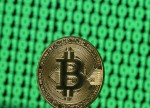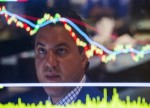
- All Instrument Types
- Indices
- Equities
- ETFs
- Funds
- Commodities
- Currencies
- Crypto
- Bonds
- Certificates
Please try another search

5 Long/Short ETFs To Play In Market Crash

The prolonged streak of gains for the key U.S. indices faltered to start February as concerns regarding stock market correction loom large. It now seems that the outstanding U.S. stock rally that started with Trump’s win (barring some occasional selloffs) might finally succumb to a slowdown on overvaluation concerns as well as rising rate worries and higher inflation expectations.
Though hopes of easing regulation, the tax reform bill and heavy investments in infrastructure pushed stocks higher, political turmoil and worries over a likely uptick in deficits stirred concerns all over again.
Chances are high that the stocks will be more-or-less steady this year, especially on a pickup in corporate earnings and upbeat global growth. Yet, one cannot rule out chances of volatility. After all, the U.S. President-elect’s relationship with foreign superpowers are yet to be understood clearly.
From his campaign days, Trump has indicated that he wants to renegotiate the North American Free Trade Agreement (NAFTA) or totally remove it. Now, this agreement may be threatened as Trump intends to bring jobs offshored to countries like Mexico back to America. As a part of its protectionist agenda, U.S. president Donald Trump levied tariffs on imported solar panels and washing machines in late January (read: Trump's Import Tariffs: ETF & Stocks in Focus).
Plus, geo-political risks including terrorism and Brexit and its contagion over the global market are there. If these are not enough, cryptocurrencies — the hottest trades of 2017 — have fallen flat. Bitcoin which hit a $19,000-level in December, is hovering now close to $7,000. Most global regulators were skeptical about bitcoin as the asset is highly volatile and speculative.
A report issued by CNBC indicated that “Bank of America (NYSE:BAC), Citigroup (NYSE:C) and J.P. Morgan Chase said they would no longer allow Bitcoin and other cryptocurrencies to be bought with their credit cards. Lloyds Banking Group (LON:LLOY) joined the ban on Monday.”
Against this backdrop, the market crashed and is likely to stay volatile even in the coming days. Three biggest ETFs, SPDR S&P 500 ETF (NYSE:SPY) (AX:SPY) , SPDR Dow Jones Industrial Average (SI:SPDR) ETF (V:DIA) and PowerShares QQQ ETF QQQ lost about 4.1%, 4.6% and 3.9%, respectively, on Feb 5.
Volatility finally started to rule in the broader equity market. iPath S&P 500 VIX ST Futures ETN VXX was up 33.7% on Feb 5, 2018. As of the same date, the yield on benchmark U.S. Treasuries was 2.77%, up from 2.46% recorded at the start of the year.
To bypass the expected equity market volatility, investors may rev up their exposure to long/short ETFs. Below we highlight five ETFs that may beat the ongoing blues in the market (read: Time for Defensive ETFs?).
AGFiQ U.S. Market Neutral Anti-Beta Fund BTAL
Investors who want to shift their focus to investing in low beta stocks during this uncertain market environment can consider adding BTAL ETF to their portfolio. This fund follows the Dow Jones U.S. Thematic Market Neutral Anti-Beta Index which is an equal weighted, dollar neutral, sector neutral benchmark. The index identifies the lowest beta stocks and goes long on them, while at the same time going short on the highest beta stocks. The fund charges 75 bps in fees.
ProShares Inflation Expectations ETF (BO:RINF)
The underlying index of the fund, the Citi 30-Year TIPS (Treasury Rate-Hedged) Index, tracks the performance of long positions in the most recently issued 30-year TIPS and duration-adjusted short positions in U.S. Treasury bonds of, in aggregate, approximate equivalent duration dollars to the TIPS. The product charges 30 bps in fees (read: What Yellen's Final Meeting Means for These ETFs).
AGFiQ U.S. Market Neutral Momentum Fund MOM
The fund follows the Dow Jones U.S. Thematic Market Neutral Momentum Index. It charges 75 bps in fees.
AGFiQ U.S. Market Neutral Value Fund (BO:CHEP)
The product seeks results that correspond to the price and yield performance of the Dow Jones U.S. Thematic Market Neutral Value Index. The fund charges 75 bps in fees.
PowerShares Multi-Strategy Alternative Portfolio LALT
The fund seeks to achieve a positive total return with low correlation to the broader securities markets by investing in a combination of equity securities, financial futures contracts, forward currency contracts and other securities. It charges 98 bps in fees.
Want key ETF info delivered straight to your inbox?
Zacks’ free Fund Newsletter will brief you on top news and analysis, as well as top-performing ETFs, each week. Get it free >>
SPDR-DJ IND AVG (DIA): ETF Research Reports
NASDAQ-100 SHRS (QQQ): ETF Research Reports
SPDR-SP 500 TR (SPY): ETF Research Reports
IPATH-SP5 VX ST (VXX): ETF Research Reports
QS-US MN VALUE (CHEP): ETF Research Reports
QS-US MN AN-BET (BTAL): ETF Research Reports
PRO-SH INFL EXP (RINF): ETF Research Reports
PWRSH-MS AP (LALT): ETF Research Reports
QS-US MN MOMNTM (MOM): ETF Research Reports
Original post
Zacks Investment Research
Related Articles

Through many years of frustration among gold bugs due to the failure of gold stock prices to leverage the gold prices in a positive way, there were very clear reasons for that...

I know there is the smell of fear in the air when I see my readership double as we reach a point where weekly chart factors come into play. Up until last week, markets have...

Professional traders get paid because of one skill and one skill only: the ability to foresee what the world (or the economy, at least) might look like in six to nine months....
Are you sure you want to block %USER_NAME%?
By doing so, you and %USER_NAME% will not be able to see any of each other's Investing.com's posts.
%USER_NAME% was successfully added to your Block List
Since you’ve just unblocked this person, you must wait 48 hours before renewing the block.
I feel that this comment is:
Thank You!
Your report has been sent to our moderators for review





Add a Comment
We encourage you to use comments to engage with other users, share your perspective and ask questions of authors and each other. However, in order to maintain the high level of discourse we’ve all come to value and expect, please keep the following criteria in mind:
Enrich the conversation, don’t trash it.
Stay focused and on track. Only post material that’s relevant to the topic being discussed.
Be respectful. Even negative opinions can be framed positively and diplomatically. Avoid profanity, slander or personal attacks directed at an author or another user. Racism, sexism and other forms of discrimination will not be tolerated.
Perpetrators of spam or abuse will be deleted from the site and prohibited from future registration at Investing.com’s discretion.